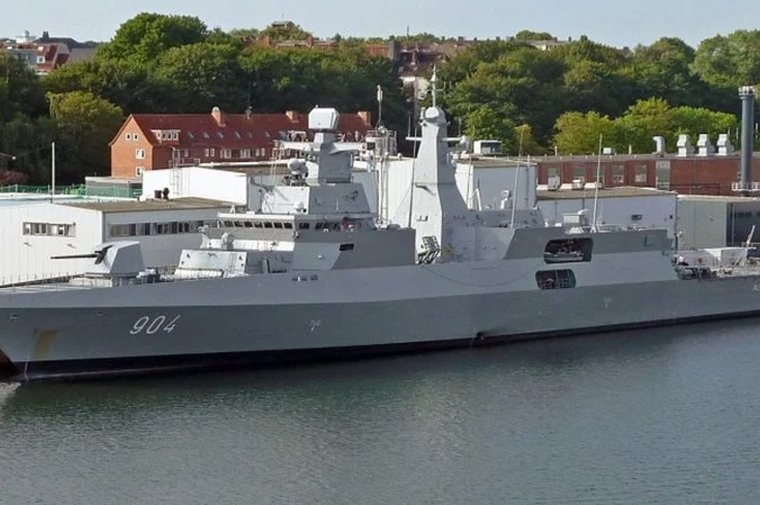Australia narrows SEA 3000 frigate designs to TKMS and MHI
Details
More Products & Services
Products & Services
Shephard Plus Update
Shephard Media
Shephard Plus is updating in June 2018 with rich new capabilities, and is now one of the most cost-effective and valuable aerospace and defence market intell...
Military Unmanned Systems Handbook
Shephard Media
The Military Unmanned Systems Handbook (Digital Download) is an international guide to the military UV industry and provides detailed information on air, ground and sea (surface & sub-sea) vehicles as well as subsystems. What's included: Unencrypted 390+ page PDF of equipment and supplier information Market summary
Defence Insight
Shephard Media
Some of the things people like you use Defence Insight for:
- Total addressable market sizing ($)
- Competitor analysis
- Cost analysis
- Market forecasting
- Growth identification
- Increasing closing ratio
- Increasing closing order value
- Estimating product potential
- Calculating sales forecasting
- Supply and demand analysis
- Total addressable market sizing ($)
- Competitor analysis
- Cost analysis
- Market forecasting
- Growth identification
- Increasing closing ratio
- Increasing closing order value
- Estimating product potential
- Calculating sales forecasting
- Supply and demand analysis
Description
The procurement process for Australia's new general purpose frigates has narrowed from five contender companies to just two - Mitsubishi Heavy Industries (MHI) from Japan and ThyssenKrupp Marine Systems (TKMS)from Germany.
The Royal Australian Navy(RAN) has long been looking for a new design to replace its ageing Anzac-class vessels with modern frigates that could be on station by 2029. Construction on the frigates has been scheduled to begin in 2026.The Navy has beenlooking for a minimum of seven, and an optimum of 11 frigates, with designs that are at least the size of the existing Anzac-class vessels, and potentially anything up to 50% larger and with up to double the missile capacity.
The Australian government had a long list of five potential shipbuilders, but has now narrowed down the contest to a choice between either TKMS and MHI.
Related Articles
Introduction of Australian frigates could be substantially delayed
Australia's new frigate options: No easy choices as pressure mounts on DoD
Military threats force through Australian frigate procurement
Part of the Australian criteria under its SEA 3000 programme was a “zero change” or “no change” clause, meaning contenders would have to deliver a design fully specified to existing foreign criteria. None of the long listcontenders, including those that made it to the short list,used a configuration that is currently in service with the RAN.
TKMS's MEKO A-200 is a modern version of an Anzac-class frigate, and is modularly built, suggesting it could easily accommodate any necessary modifications.
MHI's Mogami frigate has already been selected to replace the ageing Asagiri- and Abukuma-class light destroyers in the Japanese Navy, and also brings modularity to the table, ensuring a similar flexibility of function and modification should it become the replacement for the Anzac-class.
The final decision as to which of the two frigate designs will win the contract (valued at US$4.6 billion by Shephard Defence Insight) has beenscheduled for 2025.
Related Programmes in Defence Insight
Project SEA 3000 [Australia]
Related Equipment in Defence Insight
Mogami Class (30FFM)
MEKO A-200
The Royal Australian Navy(RAN) has long been looking for a new design to replace its ageing Anzac-class vessels with modern frigates that could be on station by 2029. Construction on the frigates has been scheduled to begin in 2026.The Navy has beenlooking for a minimum of seven, and an optimum of 11 frigates, with designs that are at least the size of the existing Anzac-class vessels, and potentially anything up to 50% larger and with up to double the missile capacity.
The Australian government had a long list of five potential shipbuilders, but has now narrowed down the contest to a choice between either TKMS and MHI.
Related Articles
Introduction of Australian frigates could be substantially delayed
Australia's new frigate options: No easy choices as pressure mounts on DoD
Military threats force through Australian frigate procurement
Part of the Australian criteria under its SEA 3000 programme was a “zero change” or “no change” clause, meaning contenders would have to deliver a design fully specified to existing foreign criteria. None of the long listcontenders, including those that made it to the short list,used a configuration that is currently in service with the RAN.
TKMS's MEKO A-200 is a modern version of an Anzac-class frigate, and is modularly built, suggesting it could easily accommodate any necessary modifications.
MHI's Mogami frigate has already been selected to replace the ageing Asagiri- and Abukuma-class light destroyers in the Japanese Navy, and also brings modularity to the table, ensuring a similar flexibility of function and modification should it become the replacement for the Anzac-class.
The final decision as to which of the two frigate designs will win the contract (valued at US$4.6 billion by Shephard Defence Insight) has beenscheduled for 2025.
Related Programmes in Defence Insight
Project SEA 3000 [Australia]
Related Equipment in Defence Insight
Mogami Class (30FFM)
MEKO A-200

Share
Recent Chats
Share via email
Future: handle WhatsApp here
Future: handle LinkedIn here
Future: handle Twitter here
SUBMENU HERE
Share via Chat
Copy Link



